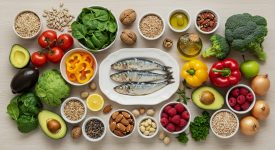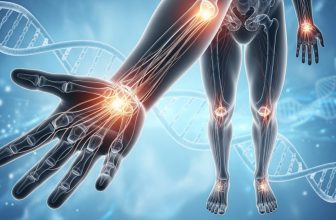
Nutrition and Diet in Dupuytren’s Disease: Can Food Choices Help?
Nutrition and Diet in Dupuytren’s Disease: Can Food Choices Help?
Introduction for Nutrition and diet
Food plays a much deeper role in our health than many realize—it influences inflammation, tissue repair, and even how our connective tissue responds to stress and injury. Dupuytren’s Contracture, a condition where fibrous cords form under the skin of the hand and pull the fingers inward, is no exception. While there’s no single meal plan that can cure the disease, research increasingly shows that the right food choices can slow its progression, reduce inflammation, and improve recovery after treatments such as Xiaflex injections, needle aponeurotomy, or surgery.
How Nutrition and Diet Affects Fibrosis
At the heart of Dupuytren’s disease lies fibrosis, a process where fibroblast cells produce excess collagen that hardens and shortens the tissue. Fibrosis begins with chronic inflammation. When inflammatory cytokines—such as TNF-α, IL-6, and TGF-β—stay elevated, they signal the body to keep producing collagen even when it’s not needed. Over time, this leads to thickened cords and contractures.
A 2019 review published in Nutrients revealed that anti-inflammatory eating patterns can significantly lower these cytokines, helping to regulate fibroblast activity and collagen turnover. Patients following such approaches also demonstrated better wound healing and reduced stiffness in other fibrotic conditions. Although Dupuytren’s-specific studies are limited, the same inflammatory pathways are involved, suggesting that dietary management could play a meaningful supportive role.
The Anti-Inflammatory Plan
Among all eating patterns, the Mediterranean approach is consistently shown to reduce chronic inflammation and support connective-tissue health. It emphasizes natural, unprocessed foods and healthy fats that protect against oxidative damage. Core elements include:
- Colorful vegetables and berries: Rich in flavonoids and polyphenols that neutralize free radicals.
- Leafy greens and herbs: Provide magnesium and vitamin K, essential for tissue elasticity.
- Cold-water fish such as salmon, mackerel, and sardines: Packed with omega-3 fatty acids that balance inflammatory cytokines.
- Olive oil, nuts, seeds, and avocados: Supply monounsaturated fats that improve microcirculation and tissue repair.
- Minimal red meat and refined sugar: Helps reduce oxidative stress and glycation.
Adopting even partial elements of this plan—like replacing butter with olive oil or snacking on almonds instead of chips—can gradually reduce inflammation and improve hand comfort.
👉 Internal link: Dupuytren’s Disease and Diabetes – The Hidden Connection
Foods and Habits That Harm Collagen
While some foods nurture connective tissue, others do the opposite. Diets high in sugar, alcohol, and fried foods produce harmful compounds called advanced glycation end products (AGEs). These molecules stiffen collagen fibers, making them brittle and less flexible—exactly what worsens Dupuytren’s symptoms.
A study published in Alcohol & Alcohol (2007) found that heavy alcohol consumption nearly doubles the risk of developing Dupuytren’s disease. Alcohol also depletes key nutrients like magnesium and B vitamins, which are vital for cellular repair. Likewise, processed meats and seed oils (such as corn, soybean, and sunflower oil) add oxidative stress and interfere with healthy collagen synthesis.
Simple swaps can make a real difference within weeks:
- Choose sparkling water instead of soda.
- Use olive or avocado oil instead of vegetable oil.
- Opt for grilled or steamed meals instead of deep-fried options.
These small daily changes can help protect the fascia and support healthier connective tissue over time.
Key Nutrients for Healing
Specific vitamins and minerals are crucial for preventing tissue stiffening and aiding recovery after treatments.
- Vitamin D – Regulates the immune system and fibroblast behavior. Deficiency is common in Dupuytren’s patients and is linked to greater stiffness.
- Magnesium – A natural muscle relaxant that assists in collagen remodeling and nerve function.
- Omega-3 Fatty Acids – Found in fish oil, flaxseed, and walnuts, omega-3s reduce cytokine activity and improve cell membrane flexibility.
- Antioxidants (Vitamins C, E, and polyphenols) – Neutralize free radicals, protecting collagen from oxidative damage.
According to Mayo Clinic guidelines, maintaining healthy levels of vitamin D and magnesium supports overall connective-tissue resilience. Supplements can help, but it’s best to consult a healthcare provider before use, especially during active treatment.
Gut Health and Dupuytren’s
Emerging science links the gut microbiome—the trillions of bacteria in the digestive tract—to inflammation and fibrosis. An unbalanced microbiome can trigger immune responses that fuel connective-tissue overgrowth.
Maintaining gut health through what you eat is therefore a powerful strategy. Fermented foods like yogurt, kefir, sauerkraut, and kimchi introduce beneficial probiotics. High-fiber vegetables such as asparagus, leeks, and broccoli feed these good bacteria, helping to regulate immune signaling and reduce systemic inflammation.
👉 Internal link: Gut Health and Dupuytren’s Disease
What the Science Says
A review by Calder in Nutrients (2019) summarized over 200 studies on inflammation and connective tissue, concluding that anti-inflammatory eating directly affects gene expression related to oxidative stress and tissue repair. Improved omega-3 intake, antioxidant consumption, and blood-sugar control have all been shown to lower fibrosis markers in related diseases such as liver and lung fibrosis.
While Dupuytren’s-specific clinical trials are still emerging, the overlap of biological pathways strongly suggests similar benefits. Patients who improve their eating habits often report less stiffness, better flexibility, and quicker recovery after minor injuries or procedures. Though anecdotal, these experiences align with current research findings.
Connections to Dupuytren’s Disease
It’s important to set realistic expectations: food choices can’t reverse existing cords or undo contractures once they form. However, they can influence how quickly new nodules appear and how the tissue heals after treatment. A nutrient-rich, anti-inflammatory pattern provides the body with the raw materials needed to rebuild collagen properly and reduce overactive fibrosis.
Patients who undergo Xiaflex injections or surgery may also find that optimizing their meals before and after the procedure shortens recovery time, minimizes swelling, and enhances range of motion exercises during rehabilitation. Hydration, balanced electrolytes, and sufficient protein are equally important during this period.
Key Takeaways
- Inflammation drives fibrosis – and food is one of the strongest tools to control it.
- Healthy fats help – Omega-3-rich foods balance collagen synthesis and fibroblast activity.
- Avoid AGE foods – Processed sugars and fried foods stiffen collagen and worsen symptoms.
- Gut health matters – A balanced microbiome lowers cytokines and systemic inflammation.
- Consistency is key – Small, daily improvements create long-term resilience.
Final Thoughts
Dupuytren’s Contracture may have a genetic and mechanical origin, but lifestyle still matters. Each meal is an opportunity to support your connective tissue, reduce inflammation, and improve your body’s ability to heal. By embracing nutrient-dense, anti-inflammatory foods—and avoiding those that damage collagen—you can slow disease progression and potentially enhance the results of medical treatments.
Food won’t replace medical care, but it can work alongside it. The path to better hand health may begin not in the doctor’s office, but on your plate.
Attribution (CC BY 4.0): Adapted from Calder PC. Nutrition and Inflammation. Nutrients. 2019; 11(6):1344. Licensed under Creative Commons Attribution 4.0.
Call to Action: Join our Dupuytren’s nutrition community → Facebook Group. Explore meal guides and research updates at DupuytrensSolutions.com.






